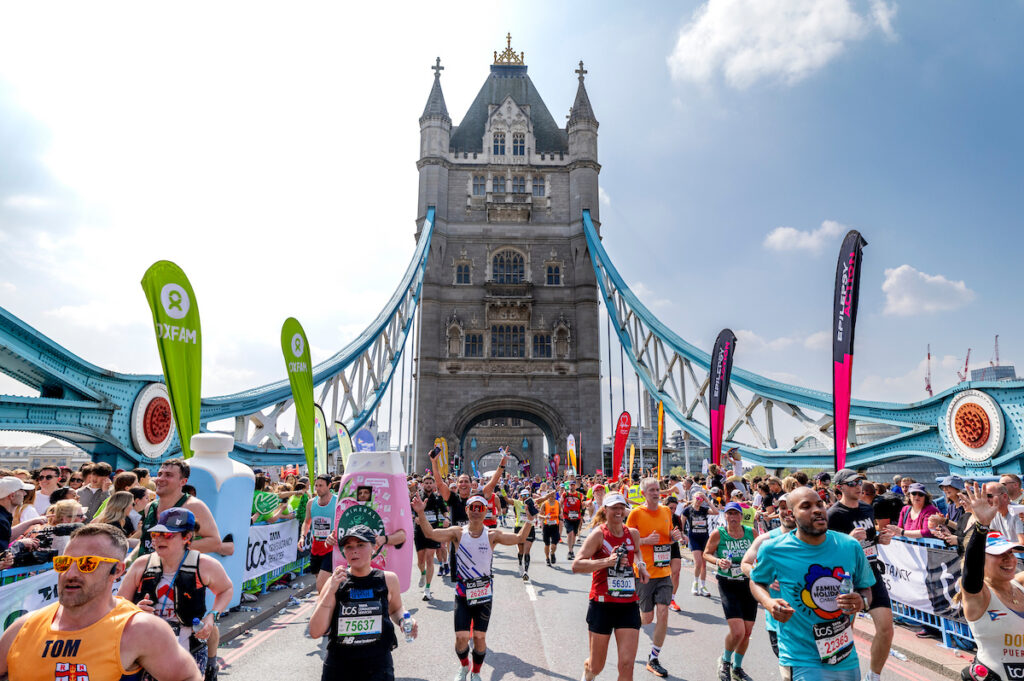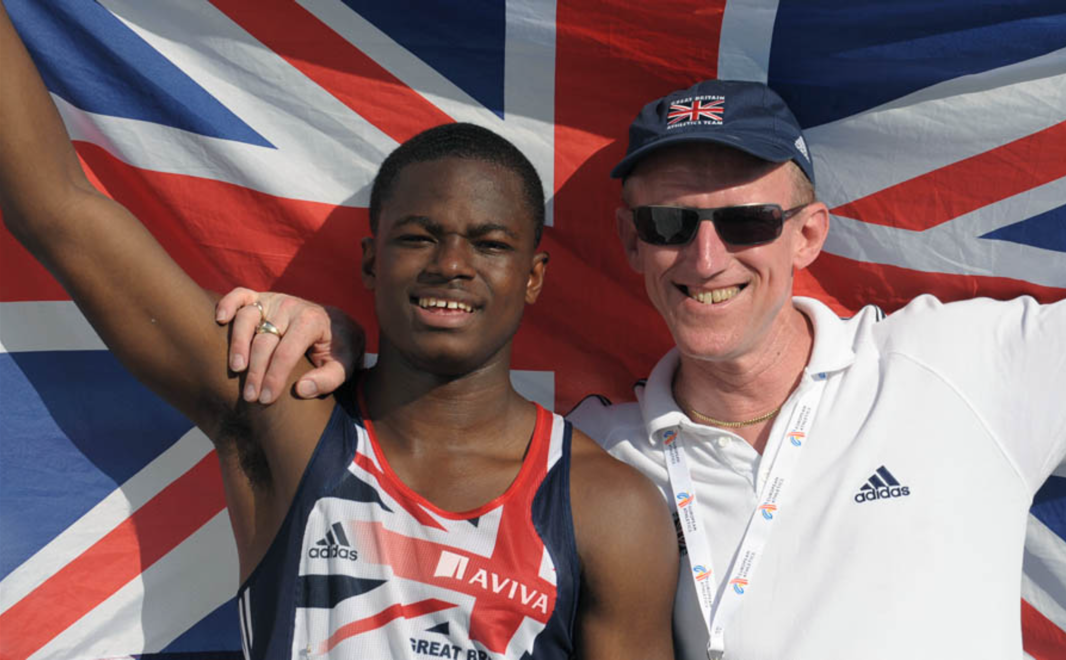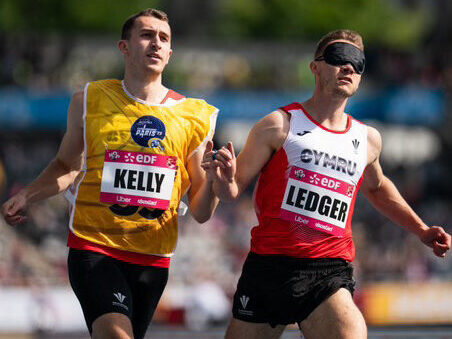On your marks, get set, GO! You see the runners cross the finish line, but what goes into setting up the London Marathon? Sidelines speak to the route manager to learn more.
Sophie Blackett has been the route manager of the London Marathon for three years, as well as running the course herself in 2011 with her dad and brother. She explains how the 26.2 miles of road, 56,000 runners, and 5-6,000 staff all come together to create the iconic event…
How early does marathon planning start?
We gather insights and feedback from the year before. We are doing that at the moment, from 2025, this means we can then start the planning straight away.

Photo: Ian Walton for London Marathon Events

Photo: Kieran Cleeves for London Marathon Events
In terms of the actual event itself, the setup, we have signage going out for about two weeks before, but the majority of infrastructure for the route gets sent out and put in strategic locations in the week leading up to the London Marathon. But road closures don’t go until the morning of.
The actual route itself doesn’t get set up until a few hours before we have participants on the course. So quite high pressure, speedy setup.
It’s usually quite tight, but we always get there.
How many people are working to make the marathon happen?
If you were to add up every member of staff working across the route, it’s probably somewhere between 5,000 and 6,000 people.
I have a team of about just over 50 experienced event professionals who look after different sections of the route and they manage teams of stewards, volunteers, traffic management people across the footprint of the route.”
Are there parts of the route which are high pressure in crowd management?
There are some areas that are more popular with crowds, so we have to focus on that crowd management piece.
Rainbow Row, the LGBTQA+ activation that we put on Butcher Row has a stage at either end of it, performers from the community and enormous splashes of rainbow colour with branding and flags.
Because of the size and scale of it, and because we can’t start setting it up till eight o’clock in the morning, it’s quite high pressure getting it all set up and ready for when those first wheelchair athletes come through.
It’s definitely worth the added pressure to bring in these bits. Elements like that really bring the London Marathon to life.

Photo: Anthony Upton for London Marathon Events
What is the day like for a route manager?
I’m actually not running around doing all of the setting up.
I’ve got all of the information, up at Transport for London headquarters, so that I can be chatting with the teams. I’ve got over 50 event professionals on the ground, running around managing contractors, making sure everything goes in place.
Throughout the day, I am just overseeing it, keeping an eye on the runners, making sure they’re all OK.
Have you seen increased runners because of social trends?
Absolutely yes.
I think this would probably be classed as the third running boom that we’ve had in recent years.
We’ve had increased numbers every year since COVID at the London Marathon. And we’re really, really fortunate with how popular the London Marathon is. The number of people that enter the ballot, the number of charities that have places and the amount of money that’s raised through it is amazing.
Since 2021, the number of runners at the London Marathon has increased by over 20,000.

Photo: Ryan Jenkinson for London Marathon Events
How do you keep runners safe along the 26.2 mile route?
We do a lot of boring work pre-London Marathon to look at flow rates, to make sure that the course is wide enough and make sure that everybody, no matter what time of day it is, will continue flowing through the course.
Obviously, long distance events put strain on people.
We have a very significant medical presence across the footprint of the route. And other than that, it’s just making sure that people are getting the hydration that they need and the support that they need, which obviously the crowds really help us with.
Is there an upper limit of runners allowed to partake?
Yes.
We have to balance having an amazing event and getting as many people out on the roads doing a marathon as possible with not impacting the people of London in an unreasonable way.
So that’s really where the capacity will come from. We have to safely get all the participants through the event within a timeframe. We have been refining our processes which is how we’ve been able to increase that over the last few years.
We’re probably not far off [the limit].
How influential is the marathon socially?
We have a parent charity we send our profits to, the London Marathon Foundation. Since 1981 (when both the London Marathon and the Foundation were founded), the Foundation has awarded more than £110 million to more than 1,600 projects that inspire activity across the UK.
The London Marathon itself has also raised more than £1.3 billion for charities since 1981, and we also support community events like the Black Unity Bike Ride, Black to the Trails, and a number of school events and initiatives.

Photo: Jason Ludlow for London Marathon Events
How do you ensure the medical teams can operate effectively?
We work really closely, looking at previous medical data, and with the medical professionals to strategically position them along the route.
With 45 years of data, we can actually predict where people start to struggle, get cramps and where they start needing a bit of support from physios.
It’s not just doctors and nurses though.
We have physios and podiatrists who come and volunteer as well to support with the more traditional blisters and cramps and things. They’re spread across the whole route to try and ensure that easy access.
And for all of those 56,000-plus people that are running it, we have to make sure it’s 26.2 miles. So it’s not as straightforward as just tweaking the route.
It’s not an easy thing to do.

Photo: Felix Diemer for London Marathon Events
How important are the volunteers?
One of the unique things about the London Marathon is how lucky we are with the number of volunteers we have, because we have 6,500 helping from Wednesday until Sunday.
They’re brilliant, energetic and engaged throughout the whole day.
We have really amazing historical relationships with lots of running clubs and sports clubs around London and further afield now.
They provide large groups, but over the last couple of years, we’ve also been looking to give individuals the opportunity to come and join in with the day, because it can be a long day, but it’s really fun for the volunteers and we get lots of people who come back every year.
I’m sure you’ve heard lots of people say it before, but we wouldn’t be able to deliver the event without them. So it’s an amazing thing to have.
Read more about The TCS London Marathon here.
Sidelines Recommends

“I was given four to six months to live”: athletics coach John Powell’s story
Whether it’s shaping future Olympians or them helping save his life, athletics coach John Powell MBE proves coaching doesn’t stop at the finish line.

Argenti Motorsport: A family’s formula for success
Argenti Motorsport isn’t just about speed; it’s about building a foundation for the future.

From root to pitch – how are cricket bats made?
Making a cricket bat is no easy task. This is how Wombat Cricket crafts the perfect bats… Harry Solomon, photo courtesy of Harry SolomonWe often buy cricket bats without a second thought, but at Wombat Cricket, there’s a whole lot more consideration to it. From…



